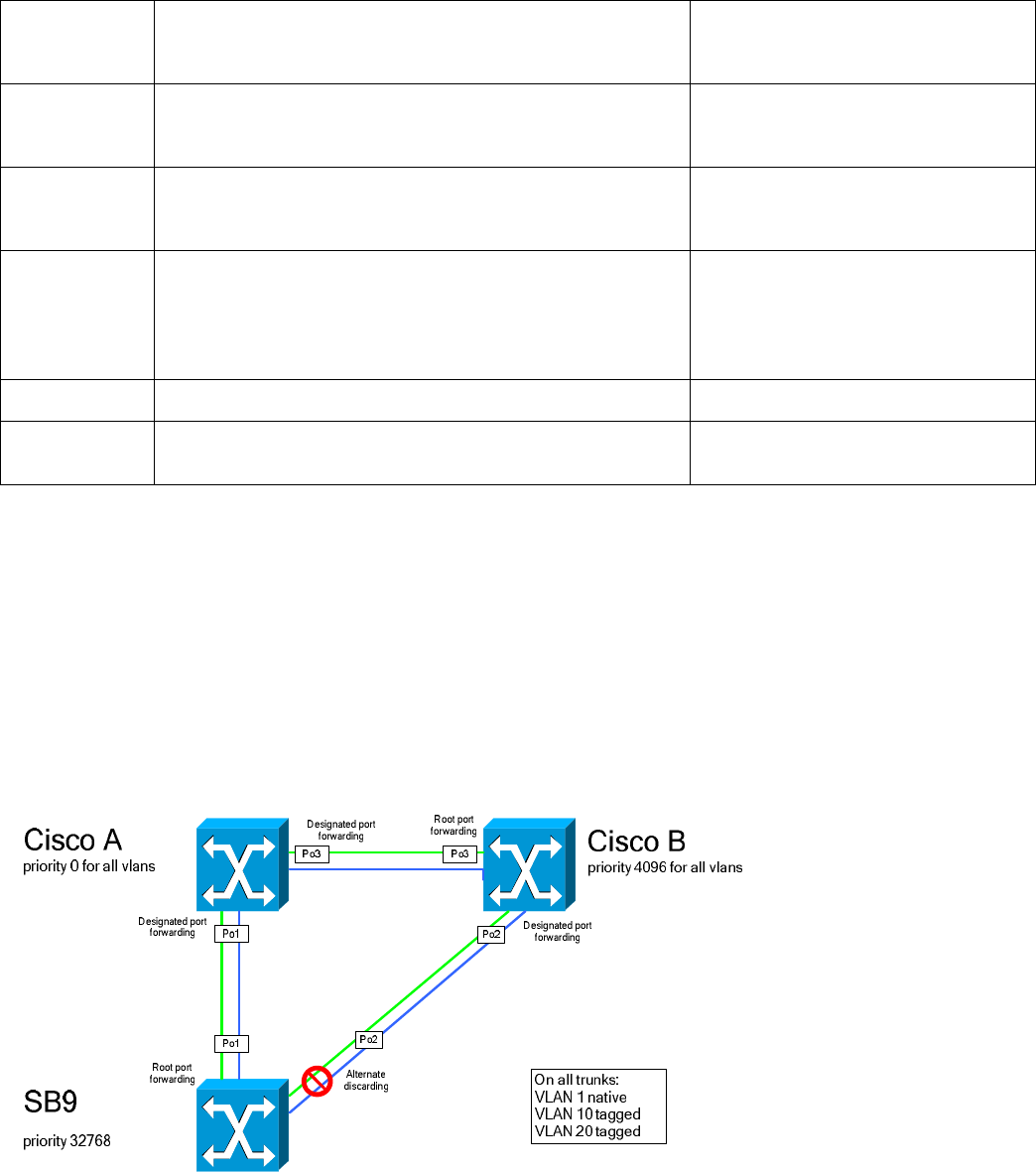
White Paper Issue: October 2006 Integration of BX600 SB9 Switches in Cisco Networks Page 11 / 47
2.4 Spanning Tree Protocol
2.4.1 Introduction
When the only standard for spanning tree protocols in LANs was STP, as specified in 802.1D, Cisco developed a number of
proprietary protocol enhancements. Some of these were adopted into the RSTP standard but others were not. Cisco therefore
also modified their RSTP implementation to be compatible with their enhanced STP. Table 3 shows all current STP
implementations.
STP 802.1D STP as specified in 802.1D. Slow convergence, does not
support multiple instances for VLAN trunks.
SB9: conforms to the standard
Cisco: supported only on access ports
not on trunks.
RSTP 802.1w Rapid STP as specified in 802.1w. Fast convergence, does not
support multiple instances for VLAN trunks.
SB9: conforms to the standard
Cisco: supported only on access ports
not on trunks.
MSTP 802.1s Multiple Instance STP as specified in 802.1s. Fast convergence,
support multiple instances for VLAN trunks
SB9: conforms to the standard
Cisco: conforms to the standard but not
common in Cisco environments
PVST+ STP as specified in 802.1D with the following enhancements:
• port-fast feature
• uplink-fast feature
• backbone-fast features
• spanning tree for each VLAN
Fast convergence, compatible to 802.1D even on VLAN trunks.
Cisco: proprietary solution
SB9: not supported yet
PVST Like PVST+ but supporting only ISL trunks Cisco: proprietary solution
RAPID-PVST RSTP as specified in 802.1w with the following enhancements:
• spanning tree for each VLAN
Fast convergence, compatible to 802.1D even on VLAN trunks.
Cisco: proprietary solution
SB9: not supported yet
Table 3 : Spanning tree protocol implementations
When connecting switches without VLAN trunks, PVST+ and STP are compatible with RSTP and RAPID-PVST respectively
without any problems. Other combinations are discussed in the following section.
Running ST P 802.1D with PVST+ on VLAN Trunks
When running STP over VLAN trunks, MSTP is the only STP protocol implemented by Cisco that completely complies with the
IEEE standard. This is unfortunately not usually used in datacenter networks, where PVST+ and RAPID-PVST are more
common.
Unlike 802.1D, in which only one STP instance is used to control the STP state of the trunk, PVST+ runs one STP instance per
VLAN, sends BPDUs and maintains one STP state per VLAN on a trunk. In addition to this major deviation from the standard,
Cisco added a number of minor changes, such as the port-fast, uplink-fast and backbone-fast features, which have only local
effects and do not limit their interoperability.
PVST+ is also compatible to STP as specified in 802.1D when there is a native VLAN on the trunk. Figure 3 shows a scenario in
which two Cisco switches are running PVST+ and an SB9 is running STP as specified in 802.1D.
Figure 3 : Combining PVST+ and 802.1D
Switch A is configured as root bridge, while switch B will take over the root role when A fails. Since switch A sends untagged
BPDUs from VLAN 1 to Po1, the SB9 uses Po1 as root port. Po2 of SB9 will take on port role “alternate” and will be in the state
“discarding” and will not send any BPDUs at this port. Switch B will therefore also set its port Po2 to “designated” and
“forwarding”. The SB9 takes all decisions as indicated by the BPDUs in VLAN 1, and all other BPDUs will be ignored. It is


















